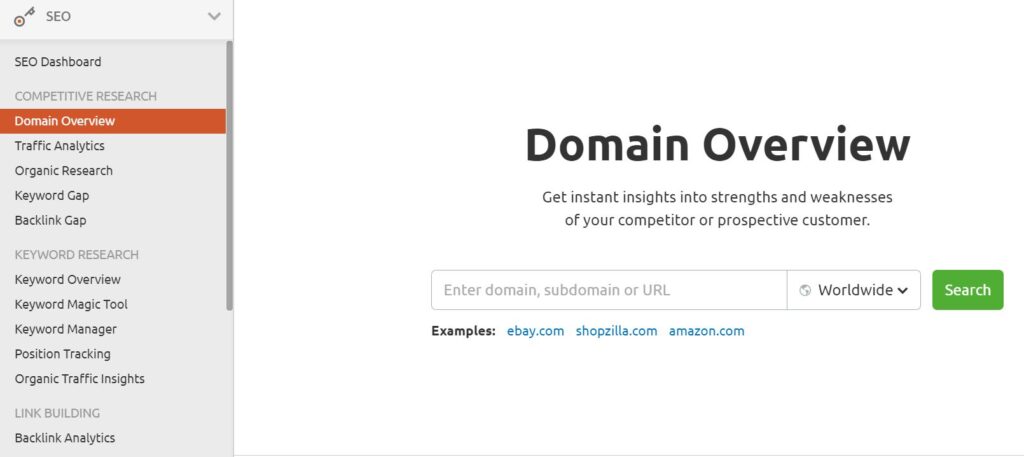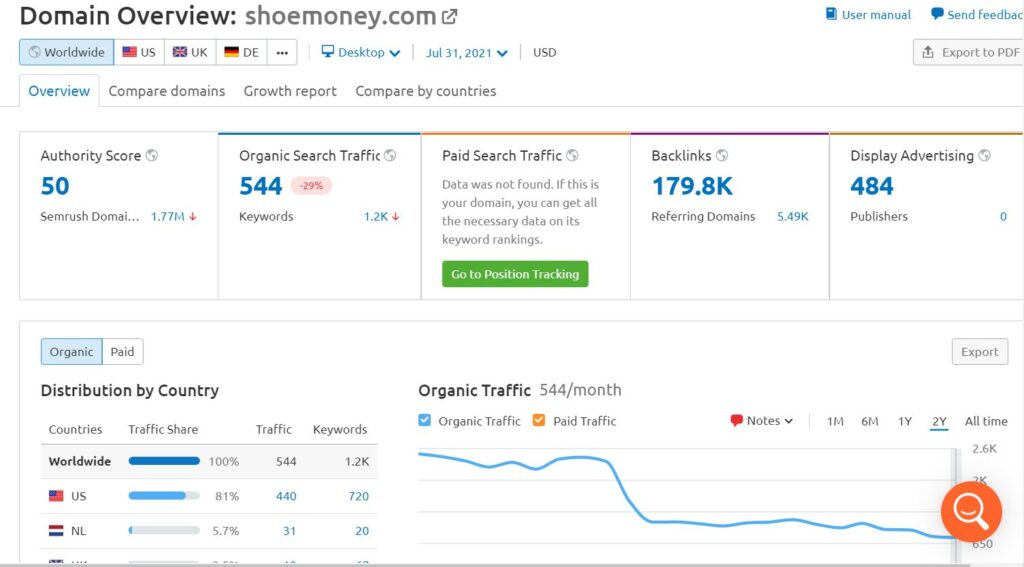Spying on competitors and stealing their traffic is a totally ethical and lawful practice to increase the traffic of your blog. Here’s how to do it.
Admit it: you too, at least once, have wondered why sites similar to yours manage to get so much more traffic than you. Especially if your site is brand new and you find yourself competing against milestones in your niche.
The topics covered are the same, maybe your articles are even more in-depth, the site’s graphics are more accurate and your commitment to the maximum.
But nothing, your traffic does not take off while that of your competitors seem busier than the A4 (the highway, not the sheet!) At rush hour.
What if … we manage to steal their traffic?
Relax, no unfair moves. No DDoS attacks, we won’t destroy their servers and everything will be perfectly ethical.
The secret is something else: to conquer the top of Google and get so much traffic, your competitors have certainly done analytics, A / B tests, and optimizations that require money and time. Here, we are going to steal these already validated strategies and we are going to apply them to our blog.
In this way we will be able to rank higher than them, avoid (or at least limit all the dirty work of analysis and testing), and “steal” not only their traffic but also their leads and their positioning.
What I am about to describe to you are not only theories but are the same techniques that allowed me to position myself in the first search results or to conquer the Google snippet for very competitive keywords and to overcome blogs with a higher authority domain than mine ( since they have been present – and active – on the web for much longer).
To do all this we will need the help of some tools and to apply some SEO copywriting techniques in our articles.
What we will do is divided into 3 main steps:
- we analyze the competition and the strategies they have implemented
- we create a better strategy and optimize our content
- and finally… let’s steal the traffic!

Spying on competitors step by step
The first part of our work will be to “spy” on competitors in order to intercept (and trace) their strategies.
Let’s start with the competitive analysis.
Competitive analysis
If there is one thing that is often overlooked when deciding to create a blog, it is competitive analysis, that is, doing an in-depth analysis of competitors both to take advantage of their best-performing strategies and to create more effective content than theirs.
If you think about it, it should be quite natural: how can you come up with a strategy or write more effective content than your competition and position yourself better if you don’t even know what your competitors have already written and how they are working?
I have worked on many blogs and too often I have noticed that brands generally have two opposite approaches towards competitors which however lead to the same result, namely that of always staying one step behind.
These approaches are:
- totally ignore the competition. Eye doesn’t see, heart doesn’t hurt, right? 😅 The answer given is always “Who cares what other people are doing. We do ours. And we do it better “(better than if you don’t even know what they’re doing?)
- be obsessed with the competition, observe their every little move and try to copy everything they do, from the website template to the landing page texts but this means duplicating content and certainly not creating a better one. And it remains a notch behind.
The first page of Google, and even more specifically, the top 3 positions of the search results are also the most coveted.
And the statistics on blogging also reveal it: 95% of users never go beyond the first page of Google search results and 33% of all clicks are destined for the very first search results.

This is precisely why when we have a blog, we need to aim as high as possible.
First of all, we will therefore use digital marketing tools that allow us to extrapolate data and numbers about our competitors and the keywords for which we want to position ourselves. We will see everything in a moment.
After we have the data, we will translate what we have obtained directly on our blog in order to implement and enhance everything that works and optimize what does not bring the desired results.
Once this is done, we will continue to monitor our positioning until, little by little, we literally steal the traffic of our competitors.
Now that you have our whole plan clear, it’s time to put it into practice.
Tools to spy on competitors
The first thing to do is to prepare the playing field and the first question we must ask ourselves is: How to analyze the competitors, their contents, and their strategies?
We can do it simply with the help of some tools that if you have a blog you should know well, such as Seozoom, Google Keyword Planner, Answer the Public, or Ubersuggest.
But generally, I use Semrush, my favorite SEO tool and which I use to optimize every aspect of my blogs. I use the paid version but you can use it totally free in its limited version.

How to identify your competitors
In addition to being one of the best SEO tools out there, Semrush allows you to do a meticulous analysis of the competition, first of all, find out who they are, which are their best-positioned pages, and which are their main keywords.
Once this first analysis has been made, we can go to study the contents and strategies of competitors more in-depth and create new content or optimize those already present on your blog in order to make them rise higher and higher in the Google SERP.
First, go to your Semrush dashboard.
You now have two options:
- you already know your competitors
- you don’t know your competitors yet.
Here’s how to proceed
If you still don’t know who your competitors are, on the left menu go to Competitor Analysis> Organic Search and type your website in the search bar. As a result, you will have the list of your organic competitors and their positioning, i.e. the main websites that compete for your own keywords. Click now on the domain you want to analyze.
If you already know who your competitors are, go to the menu on the left and click on Domain overview and enter your competitor’s domain.

In both cases, we are now on the organic search page, where we can extrapolate all the data and information we need about our # 1 competitor.
The espionage begins! 🔍
Spying on competitors with Semrush
For convenience (since it is very rich in data) I will do the research putting Shoemoney.com as a probable competitor.
Here is the data that we’ll get:


So what are the interesting data that can help us steal Millionaire traffic?
- they have 1996 keywords positioned
- they have a traffic of around 540 organic visitors
- we have extracted all the main organic keywords, which we can analyze separately
- we know which are the main pages, ie those that receive the most traffic.
Still, on the menu on the left, you can now select Competitor analysis> Traffic analysis to have a more in-depth analysis of the audience as well.
It doesn’t matter that you will do this step for each competitor. In fact, you can enter up to 3 competitor domains to make a single comparison.

Now that we have this data, let’s take a closer look at how to use it to steal your competitors’ traffic.
How to (ethically) steal your competitors’ traffic
Once we have extracted all the most important data we need to analyze our competitors, it is time to implement our strategy for creating and optimizing our content.
To be able to steal their traffic we will have to do work on several fronts. Let’s see all the actions we need to take.
Create better content… in fact, THE best
At Semrush, do keyword research and download all your competitor’s best keywords.
And now how do we proceed? Simple: we create better content, a more effective article than that of competitors.
You can do this for example by creating longer, more informative, or simply more recent and updated content.
Once you have chosen the keyword for which you want to rank, do a Google search on that keyword and open all the first 10 Google search results trying to understand the cut of the article, the length of the text, the use or less of images and videos …
Look for common patterns. If they’re in the top 10 search results, they definitely have something Google liked. You have to be able to figure out what.
I also recommend that you always do these types of searches in an anonymous window, so that the SERP is not affected by your previous searches.
You can also optimize the work always using Semrush, using the SEO Content Template (which you can always find in the menu on the left, under the Content Marketing tab) which helps you to write the content for your blog in an SEO key starting from the keyword alone.
After entering one or more keywords, Semrush will automatically analyze the top 10 search results on Google and will automatically generate a model of your article, with all the suggestions to be able to position yourself in the first results, such as:
- the recommended length
- the readability score you should get
- the related keywords to include
- what backlinks you should get
- … and so on.
The first results have often been there for a long time. And often they are 1000-word articles that have not been updated since 2006.
In this case, write longer, more in-depth, more up-to-date, and above all fresher content. You will see that it will position itself quickly.

Use longtail keywords
Longtail keywords, especially those with low competition, are often the passe-partout for the top positions in Google’s search results.
If you don’t know this term yet, I’ll give you a little recap.
Longtail keywords, or long-tail keywords, are keywords that are generally longer (> 3 words) than the so-called “dry keywords” and much more specific.
I’ll give you an example.
- “Yoga” is a dry keyword, highly competitive, and very difficult to position
- “How to get rid of the headache with yoga” is a longtail, a long tail keyword, with much less competition and easier to place in the first results.
The statistics speak for themselves: 70% of users search for longtails on Google and the reason is quite intuitive. In fact, specific searches are carried out on Google: how to do it for, what to do if, why …
Think about it for a moment. Go to your Google search history, check your latest searches.
And just about that, listen to me, I really want to give you some really valuable advice that I doubt you will find elsewhere. Before you think like a blogger, as a Google algorithm, or about sales, think like a user.
We are all Google users. Think about your searches, think about the results that have disappointed you, think about those that have satisfied you. This is the real result you need to achieve.
Always write the content that you would like to read first. It’s the best advice I can give you.
Get (and steal!) Backlinks
Well-written and optimized content is certainly not the only factor that matters for ranking.
In fact, there are many aspects that Google takes into consideration and one of these, one of the most important, is the backlinks that your article receives.
In addition to improving your positioning, backlinks are also very important for increasing the authority of a brand, especially when the link comes from large blogs and newspapers, and for obtaining quality traffic to our website.
There are many ways to get new backlinks:
- organic, i.e. people who have found your content interesting and decide to link you in their own content
- writing guest posts for other blogs
- requesting the addition or replacement of a link. I’ll explain in a moment what I mean.
Let’s see all these three points more specifically.
Organic backlinks
There’s little to say: a person reads your content and links it as an in-depth analysis of its resources. I often do this too in my articles myself.
Guest post backlinks
Another way to get backlinks is to write guest posts, which is content we write for the blog of another website in our niche, usually in exchange for a backlink to our site.
Doing so is very simple: just do a search for blogs belonging to your niche (you can also do it through the search for competitors with Semrush) and contact them asking them to host your article on their blog.
Adding and replacing links: the skyscraper technique
Let’s say you found an article on the internet that talks about how to build wooden coffee tables (a totally random example). Inside it explains the differences in construction with the various types of wood. Now, let’s say you wrote an article on how to build beech wood coffee tables.
This could be an excellent in-depth resource for that article and in this case, you could contact the blogger in question saying: “Hey, great article! Do you know that I have written an in-depth article on the subject? How about if you add a link to your resource? ”.
You may also find an article that already links to a resource but isn’t as thorough as yours, is either out of date, or has been deleted, and returns a 404 error.
Again, you can ask the site in question to replace the follow-up link with your article.
If you want to learn more about backlinks, then I suggest you take the free Semrush “Backlink Management Course”.
Increase the speed of your site
That the speed of a site is fundamental for the ranking of a site is now a well-known thing.
It is therefore essential to know how to optimize the speed of our site and reduce loading times. On this too, Google was very clear: a slow site significantly increases the bounce rate.
People have no patience, especially when it comes to the internet.
In fact, if a user clicks on your site but the content takes forever to load (and for an eternity I mean 7-10 seconds), that person will inevitably close your site and open the next search result.
And here those who positioned themselves after you stole your traffic precisely because they had a shorter loading time. This is exactly what you need to do. Be faster than your competitors.
Before doing this, however, you need to know how fast your site is and how fast your competitors’. You can find out in a simple way thanks to a tool that Google makes available for free: PageSpeed Insight.
Try to optimize both desktop and mobile but remember that the most important value between the two is definitely mobile.
So follow Google’s suggestions step by step and optimize your site to become faster than all your competitors.
Use Google Ads
If you are running paid ads on your website, you should also be familiar with your competitors’ paid campaigns and keywords.
This way you have an overview of the keywords to use. If you want to get better results, don’t forget to create better ads as well.
Final Thoughts
Spying on your competitors can make it easy for you to steal not only their traffic but also their backlinks and rankings.
And not only is it an absolutely legal practice but also an ethical and regular one, worthy of the best SEOs. In the end, Google’s top spots are limited and only the best can access them.
And you want to be among the best, don’t you?
To your success!
S







